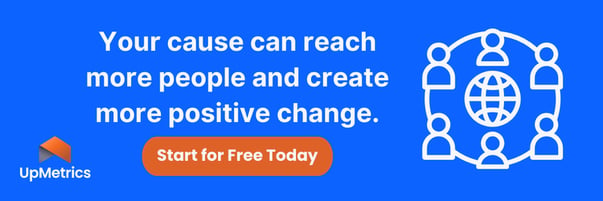5 Steps to Create a Data-driven Culture at Your Impact Organization
Access to relevant, actionable data presents an enormous opportunity for the impact sector to be more effective and efficient in reaching its goals and realizing its potential. In fact, we’re beginning to see the sector shift significantly in this direction, best represented by our champions at our partner organizations, who are leading their teams to become more data driven.
However, it is not enough to implement the proper systems and processes to support your data needs.
To become a truly data-driven organization, leadership must work to create a culture that encourages and empowers the entire team to be data driven. This is even more important in an impact-focused organization, where many team members may not have the training or work experience to understand the importance of data collection and analysis.
With 2020 underway, the time is now to adjust your organization's culture to more intentionally support your data needs. Here are 5 steps you can take to build a data-driven culture at your organization.
1. Establish and revisit the “why”
When trying to establish a data-driven culture, it is natural to get wrapped up in the systems and processes to support your organization’s operations. But before you dive into the details of “how”, it is important to communicate the “why” — or in other words, why becoming data driven is important to the success of your organization.
Establishing your why should not be a one-time activity; instead, you must revisit the big picture on an ongoing basis. Alignment across your organization on the big picture can bring clarity and consistency, and ensure that even as challenges arise, your team remains committed to the big picture despite those challenges.
2. Show benefits of data beyond fundraising
Too often impact organizations place the emphasis on being data driven around fundraising efforts. The reality is that data can and should be leveraged across any impact organization not only to increase access to funding, but also to inform program design, resource allocation, and other decision making.
Taking the time to make sure that the entire team understands the ways that data can increase their effectiveness and efficiency is essential to creating a data-driven culture. People often feel anxious when data is presented as an accountability tool that might make them look bad. Instead, help your team members understand data as a professional development tool that can shed light on where they are excelling and where they might need additional support.
Before you dive into the details of “how”, it is important to communicate the “why” — or in other words, why becoming data driven is important to the success of your organization.
3. Highlight concrete examples of success
It is important that organizational leadership establish ways to highlight examples of success on an ongoing basis. Examples make the work tangible, and can help reinforce the idea that this requires joint effort over time. Highlighting examples also provides opportunities to praise team members who are practicing a data-driven mindset.
It is a good idea to be intentional about this practice by setting aside time to share highlights via company newsletters, updates, or town halls until this kind of exercise happens more naturally as a part of the day-to-day.
4. Provide team members with ongoing training and support
Your organization’s culture can’t be data driven if your staff doesn’t have a basic understanding of how to analyze and interpret data. Every member of the organization should receive ongoing training and support, but this doesn’t necessarily have to be expensive. You can set up shared resources to help team members better understand your impact reports, and ultimately generate and analyze reports themselves. And empowering staff members to lead training for others is another way to highlight those who are regularly practicing data-driven approaches in their own work.
5. Ensure everyone has access to learn from data
In addition to providing training on how to analyze and interpret data, everyone on the team should be able to access data that’s relevant to their work. A data-driven organization should make sure that their data is in a central location and in a clean format, so that staff have access whenever the data is relevant to their role. Staff should also feel comfortable to request data in the event they don’t have access. Of course, your organization should be sure to put the right approval processes and oversight systems in place to ensure data integrity and compliance.
Data-driven decision-making and continuous improvement depends as much on the culture of your organization as it does on the systems you use for data management and data analysis. These five practices can help you empower your team with both the tools and the environment to make the most of data this year and for years to come.
Unlock your organization's impact potential with an Impact Framework
UpMetrics' next generation Impact Measurement and Management platform makes measuring, optimizing, and showcasing your organization's impact easier than ever before.
As part of our IMM Suite's free Starter Plan, we're excited to offer mission-driven organizations no-cost access to our new Impact Framework Builder functionality so that you can define how you're thinking about impact tied to your mission and vision. Click here to register and get started!

January 22, 2020


